Introduction: AI Innovation and Copyright Law in the UAE
Artificial Intelligence (AI) has swiftly become a cornerstone of corporate innovation in the United Arab Emirates, transforming sectors from finance and healthcare to creative digital enterprises. As businesses increasingly leverage AI to generate original content, art, and software, the complexity of legal ownership and copyright protection challenges existing frameworks and compels organisations to reassess their protection strategies. The UAE, known for its rapid legislative advancements and technological ambition, has responded with updated laws reflective of global trends and local priorities.
This article delivers an in-depth consultancy analysis, tailored for UAE business leaders, HR professionals, legal advisors, and in-house counsels. We examine how the UAE’s intellectual property (IP) regimes—particularly under Federal Decree-Law No. 38 of 2021 concerning Copyrights and Neighbouring Rights—address AI-generated works, who qualifies as the ‘owner,’ and best practices for legal compliance. We analyse recent updates, compare old and new provisions, and provide practical, risk-based guidance on navigating this rapidly evolving landscape.
The stakes are significant: mismanaging copyright in AI-generated outputs risks hefty penalties, business disruption, and reputational harm. This guidance ensures your organisation’s approach to AI-driven content remains compliant, future-ready, and aligned with the expectations of UAE regulators.
Table of Contents
- Legal Foundations of Copyright in the UAE
- Ownership Challenges in AI-Generated Works
- Key Updates in UAE Copyright Law (Federal Decree-Law No. 38 of 2021)
- Case Studies and AI Copyright Scenarios
- Risks of Non-Compliance and Enforcement
- Best Practices for Copyright Compliance with AI
- Looking Ahead: Emerging Trends and Considerations
- Conclusion: Preparing for AI-Driven IP Management
Legal Foundations of Copyright in the UAE
The Role of Copyright Law
Copyright law in the UAE is designed to protect the rights of creators over their original works—whether literary, artistic, or software-related. The principal legal instruments governing copyright are:
- Federal Decree-Law No. 38 of 2021 on Copyrights and Neighbouring Rights (the “Copyright Law”)
- Cabinet Decision No. 56 of 2022 Regulating Implementation of Certain Provisions of Copyright Law
- International Treaties: Berne Convention for the Protection of Literary and Artistic Works (acceded by the UAE in 2004) and other WIPO conventions
These frameworks establish fundamental rules for copyright acquisition, duration, scope, and enforcement, including recognizing both moral and economic rights.
Criteria for Copyright Protection
Under Article 2 of the Copyright Law, protection is granted to original works “expressed in a tangible form,” including computer programs and digital content, provided they are the result of human intellectual effort. This human authorship requirement is at the heart of current legal debates concerning AI-generated works.
For a work to be protected, it must:
- Be original, demonstrating creative effort
- Be fixed in a material form (text, audio, code, etc.)
- Not be expressly excluded (e.g., ideas, methodologies themselves)
Ownership Challenges in AI-Generated Works
Defining “Authorship” for AI Outputs
The rise of AI-generated art, text, audio, and software introduces a pivotal question: Can AI systems themselves be considered authors under UAE law? The Copyright Law, in line with international norms, generally recognises natural persons or legal entities as copyright owners. Since AI is neither, ownership defaults to the human or business entity responsible for the creative input or at whose direction the AI operates.
However, pinpointing where human input ends and machine autonomy begins can be challenging in complex AI environments. For example, is an individual who inputs a prompt into an AI art generator the ‘author,’ or is the company deploying an AI model that writes software code the default owner?
Copyright in AI-Assisted vs. AI-Generated Works
| Scenario | Human Element | Copyright Owner under UAE Law |
|---|---|---|
| AI-Assisted Creation | Significant human input, direction, selection | Natural person or employer (if in scope of employment) |
| Fully Autonomous AI Creation | Minimal or no human creative input | Uncertain; UAE law does not currently recognise non-human authorship |
This distinction is crucial: When human skill and judgment guide AI outputs, copyright likely subsists in the user’s favour. When AI acts without substantial direction, legal protection becomes ambiguous—a major strategic risk for businesses relying on AI-generated content.
Key Updates in UAE Copyright Law (Federal Decree-Law No. 38 of 2021)
Relevant Provisions and New Updates
The Federal Decree-Law No. 38 of 2021 and its implementing regulations have modernised the UAE’s copyright framework in several ways. Key provisions specifically relevant to AI-driven content include:
- Article 4: Clarifies eligible works for protection, including digital and computer-generated content (subject to originality and human authorship).
- Article 6: Reiterates that economic rights arise automatically upon creation, belonging to the author or the legal entity employing the author (in employer-employee relationships).
- Article 9: Outlines conditions under which employers and commissioning parties acquire copyright from employees or contractors.
- Article 41: Specifies penalties for infringement, including fines up to AED 100,000 and suspension of business activities for repeat offenders.
The Cabinet Decision No. 56 of 2022 provides additional interpretive guidance, including procedural aspects of registration. However, it does not specifically address non-human authorship or AI-generated content, thereby aligning with international conventions that require human authorship.
Comparison: Previous and Updated Legal Provisions
| Legal Aspect | Old Law (Federal Law No. 7 of 2002) | New Law (Federal Decree-Law No. 38 of 2021) |
|---|---|---|
| Explicit coverage of digital/AI content | Implied, not explicit | Now explicitly includes digital and computer-generated works (with human input) |
| Penalties for infringement | Lower, less detailed | Harsher fines, enhanced enforcement, stricter remedies |
| Right of employer | Referenced for employees | Clarified conditions for employees and contractors |
Impact of the New Law on AI-Generated Content
For businesses, the 2021 legislative updates offer clearer guidance on the protection of works created using digital technology when a human plays a substantial role. This favours organizations that structure their AI workflows to ensure meaningful human authorship and carefully document all creative contributions.
For fully autonomous AI outputs, the law remains silent, which can leave companies exposed to risk if they commercialize content without a clear human ‘author.’ Strategic guidance is recommended to close this compliance gap in practice.
Case Studies and AI Copyright Scenarios
AI Generated Marketing Content for a UAE Tech Firm
Scenario: A Dubai-based marketing agency uses an AI language model to write web copy, with a human team member providing the brand voice and final edits.
Legal Analysis: The human input—selecting, curating, and editing—meets the originality and authorship requirements under the Copyright Law. The agency (as employer) holds the copyright, allowing legal protection and enforcement options if the work is copied or misused.
Fully Automated AI Art with Minimal Human Oversight
Scenario: An Abu Dhabi media company deploys AI to generate hundreds of unique images for a digital campaign, without providing creative prompts or manual curation.
Legal Analysis: Copyright protection is uncertain. If no significant human creativity is involved, these works may not be protected under UAE law. Competitors could lawfully replicate such images without legal recourse—unless additional protections (e.g. design or trade dress registration) apply.
Software Code Generated by AI for a Banking Application
Scenario: A UAE fintech startup uses AI-powered coding tools to develop features for their banking app, after specifying the functional requirements and reviewing the output.
Legal Analysis: Where the human team specifies the desired outcome and incorporates the code following review, the code is copyrightable, with the startup as the owner under employment/commissioning rules.
Table Suggestion: Flowchart Diagram (Visual)
Recommended Placement: Here, a simple flowchart could illustrate the decision process to determine whether an AI-generated work qualifies for copyright protection under UAE law. Visuals assist non-legal audiences in understanding the sequential steps, from assessing human input to establishing ownership.
Risks of Non-Compliance and Enforcement
Key Legal and Business Risks
Organisations mismanaging AI-generated content expose themselves to several legal, commercial, and reputational dangers:
- No copyright protection: Without demonstrable human input, commercializing AI output could mean forfeiting exclusivity, with no recourse for unauthorized copying.
- Infringement liability: If AI generates content similar to existing protected works, unintentional infringement claims may arise, risking significant penalties under Article 41 of the Copyright Law.
- Disputes over ownership: Unclear documentation of the creative process can spark disputes within teams, with contractors, or with AI service vendors.
- Loss of business advantage: Absence of valid copyright reduces the organisation’s competitive edge and weakens its market positioning.
Enforcement Landscape in the UAE
The Ministry of Economy (UAE Intellectual Property Office) and the Ministry of Justice both play active roles in copyright enforcement. Under the new law, regulators can:
- Impose fines up to AED 100,000 per infringement
- Order suspension or closure of business activities (repeat violations)
- Seize infringing goods and advertising materials
- Publish sanctions through official channels, impacting brand reputation
Referencing recent enforcement actions (see Federal Legal Gazette; Cabinet Decision No. 56 of 2022), the clear trend favours zero tolerance for deliberate or negligent breaches.
Table: Penalty Comparison for Copyright Violations
| Type of Infringement | Previous Law | Federal Decree-Law No. 38 of 2021 |
|---|---|---|
| Unlicensed copying | Fines up to AED 10,000 | Fines up to AED 100,000, business suspension |
| Second/repeat offence | Increased fines, case-specific | Mandatory business closure, higher fines |
| Online/digital infringement | Not well defined | Explicitly included, harsher penalties |
Best Practices for Copyright Compliance with AI
Practical Recommendations for UAE Organizations
- Document human contribution: Establish robust processes to record how humans direct, select, or edit AI outputs. Maintain logs, prompt histories, editorial notes, and team structures.
- Implement clear internal policies: Develop copyright compliance guidelines tailored to AI usage. Clarify ownership, permissible tools, approval workflows, and risk escalation protocols.
- Review and update employment/contractor agreements: Specify in all IP-related contracts (including with freelancers and AI vendors) that copyright in AI-assisted works vests in your organization, aligned with Article 9.
- Conduct IP risk assessments: Before launching major AI projects, perform legal and technical due diligence to identify copyright risks, relying on support from experienced legal consultants specialized in UAE IP law.
- Register key works and monitor infringement: For high-value AI-assisted assets, pursue voluntary copyright registration with the Ministry of Economy IP Office. Deploy technology to monitor internet infringement and respond promptly to violations.
- Educate stakeholders: Regular training for staff on the legal boundaries of AI-generated content reduces inadvertent breaches.
Visual Aid Suggestion: Compliance Checklist Table
| Compliance Step | Status | Documentation/Responsible Person |
|---|---|---|
| Human input documented for each project | ||
| IP clauses reviewed in employment/contractor agreements | ||
| Copyright risks assessed pre-launch | ||
| Registration pursued for critical outputs | ||
| Staff trained on AI copyright rules |
Tip: Incorporating this table into internal compliance audits enables proactive and systematic management of copyright risks in all AI-driven projects.
Looking Ahead: Emerging Trends and Considerations
Global Developments Influencing UAE Copyright Law
Globally, jurisdictions are exploring how to adapt existing copyright models to AI-generated content, with proposals for sui generis rights, legal personhood for AI, or new categories of neighbouring rights. The UAE government is closely monitoring these developments, as evidenced by ongoing consultations through the Ministry of Economy and the Emirates Intellectual Property Association.
Anticipated UAE Reforms
Given the UAE’s commitment to fostering a knowledge economy, further legal clarifications or targeted updates—potentially through Cabinet Resolutions or interpretive guidelines—are likely in the medium term. Legal consultants advise organizations to monitor official channels such as the UAE Government Portal and Federal Legal Gazette for updates on regulatory reviews.
Implications for Licensing, Investment, and Innovation
Companies at the forefront of AI adoption should anticipate that future changes may affect licensing strategies, cross-border collaborations, and due diligence for M&A transactions. It is advisable to build flexibility into contracts and risk models to accommodate potential amendments to the legal definition of authorship or new regulatory restrictions.
Conclusion: Preparing for AI-Driven IP Management
AI-driven innovation in the UAE offers immense business potential, but also demands careful legal navigation. The current legislative environment provides robust protection for AI-assisted works with identifiable human authorship, while leaving fully autonomous AI outputs in a legal grey zone. With harsher penalties and proactive enforcement, regulatory compliance is not optional—organizations must rethink creative processes and legal policies to safeguard their digital assets.
In summary, UAE executives and legal practitioners should:
- Ensure all AI-generated content benefiting the business has a documented human contribution
- Update internal procedures, contracts, and compliance programs in light of Federal Decree-Law No. 38 of 2021 and related regulations
- Engage specialist UAE IP counsel to audit and future-proof innovation strategies
- Follow official channels for ongoing legal developments that may reshape the IP landscape
By embedding robust, proactive legal protection strategies into their AI workflows, UAE businesses can unlock the promise of artificial intelligence with confidence, sustainability, and full legal compliance.



